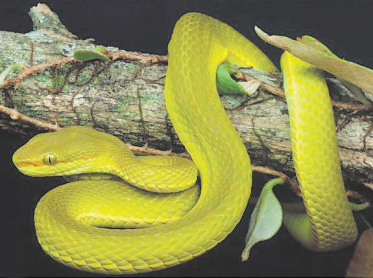Important Facts For Prelims
Green Pit Vipers
- 20 Jul 2022
- 2 min read
Why in News?
Recently, on World Snake Day (16th July, 2022), there was consensus for developing effective antivenom against the venom of the Green Pit Viper.
What are the concerns related to Green Pit Viper?
- Green pit viper is not more lethal than Russell’s viper, but the hemotoxic venom it injects prevents the blood in the body from clotting resulting in internal bleeding.
- Moreover, the antivenom available in India cannot counter the venom of the green pit viper.
- There are among 15 venomous snakes like the monocled cobra, the banded krait, the lesser black krait, the great black krait, the mountain pit viper and the redneck keelback out of 64 recorded so far across Northeast India.
- Most of the snakebite cases in the region involve different species of the green pit viper, making up the other venomous snakes.
- There is lack of standardised reporting or under-reporting of snake bites.
- The current available data say there are more than 1.4 million cases resulting in 1,25,000 fatalities annually.
What do we Know about Pit Viper?
- Pit viper, any species of viper (subfamily Crotalinae) that has, in addition to two movable fangs, a heat-sensitive pit organ between each eye and nostril which together help it accurately aim its strike at its warm-blooded prey.
- Pit vipers are found from deserts to rainforests.
- They may be terrestrial, arboreal, or aquatic. Some species lay eggs; others produce live young.
- The venomous pit vipers species includes hump-nosed pit viper, Mangrove pit viper and Malabar Pit Viper.
- Russell’s Viper and Saw-scaled Viper are two most venomous vipers species found in India and member of big four poisonous and deadliest snakes in India.
- These snake species are responsible for the majority of snake bites in India.





